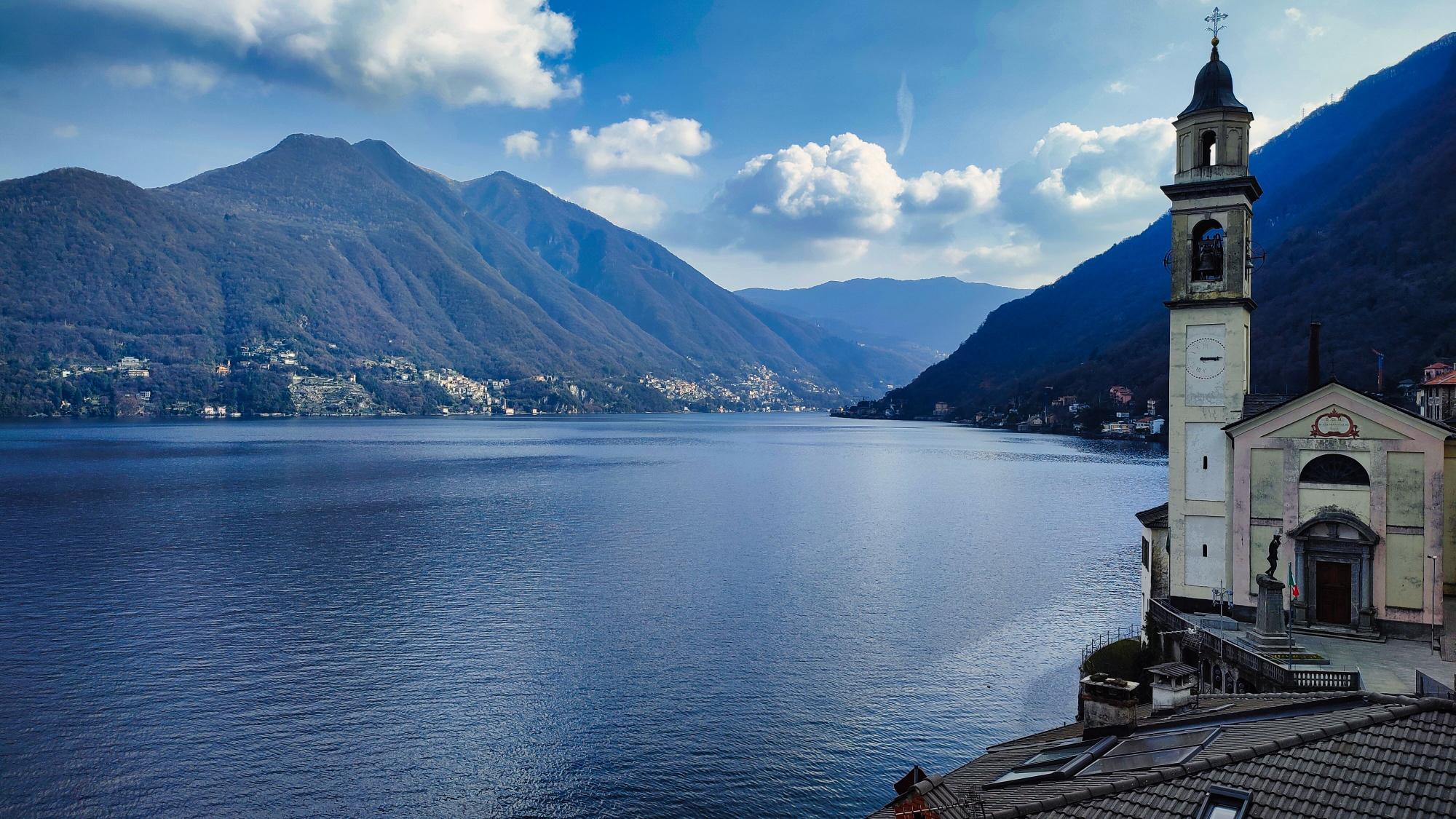



Brienno is a village perched on the shores of Lake Como, only about 20 minutes from Como and about an hour from Milan.
Brienno, the labyrinth village, is a true time capsule that keeps its timeless beauty intact: the town gives characteristic glimpses of stone stairways and narrow streets, giving off all the charm of the medieval village. Framed by the Briante and San Bernardo mountains, it combines the severe harshness of mountains and rock with the gentle caressing softness of flowing water.
Brienno preserves its origins as a medieval village intact: the stone houses built into the water that look as if suspended over the village of Nesso and its Orrido, the narrow alleys that barely separate the buildings, the stupendous porticoes, stairways and underpasses, make this place a true jewel.
Brienno was almost certainly founded by the Celts, who left traces in the area as far back as the 4th century. Following the arrival of the Romans, Brienno became a colony: we are left with evidence of this period through Roman tombstones found in the village.
In communal times, Brienno was initially part of the territory of Como: the first attested historical sources date back to the 10th century. The existence of a castle is attested at this stage, suggesting the idea that Brienno represented a stronghold of the lake defense system.
The village takes part in the Ten Years' War between Como and Milan.
After the defeat of Frederick Barbarossa, it first belonged to Milan and later became a fief of the Bishop of Como.
Related to this period, a legend recounts that after the defeat at Legnano, the emperor stopped at Brienno itself, getting drunk to ease the pain of the military shame. On leaving the tavern he stumbled on a step and hit his head so hard that he lost a tooth.
The tooth, retrieved by a resident, was kept in a parish reliquary until 1937, when the bishop of Como decided to remove everything that could not be considered a true relic of saints.
In the 11th century the Romanesque bell tower of St. Anne was built.
In 1335 Brienno is mentioned in the Statutes of Como, within which the community is obliged to maintain the Via Regina for the length of its territory. During the Spanish domination of Lombardy, Brienno will be ceded to the Gallio family. It was only in 1948 that it would be constituted into a real municipality.
At the entrance of the village we are greeted by the ancient Church of Sant'Anna, one of the oldest in the Lario, as evidenced by its 11th-century Romanesque bell tower.
A short walk from the shores of the lake, we can admire the Church of Saints Nazaro and Celso, inside paintings by master Gian Paolo Recchi, two valuable stained glass windows from the 16th century and an altarpiece by Andrea de'Passeri.In the churchyard we find the Monument to the Fallen, it is a bronze statue representing an Alpine soldier with a stone in his hand, a scene reminiscent of an episode in the Libyan War, where the Morbegno regiment composed mainly of soldiers native to these parts, surrounded by the enemy, with no ammunition to resist, armed itself with stones and rocks.
Near the village cemetery, in a beautiful panoramic position stands Chiesa dell'Immacolata , under the square in front of the parish is preserved a fortification of the Cadorna Line built during World War I, bunkers, tunnels and service rooms are still visible.